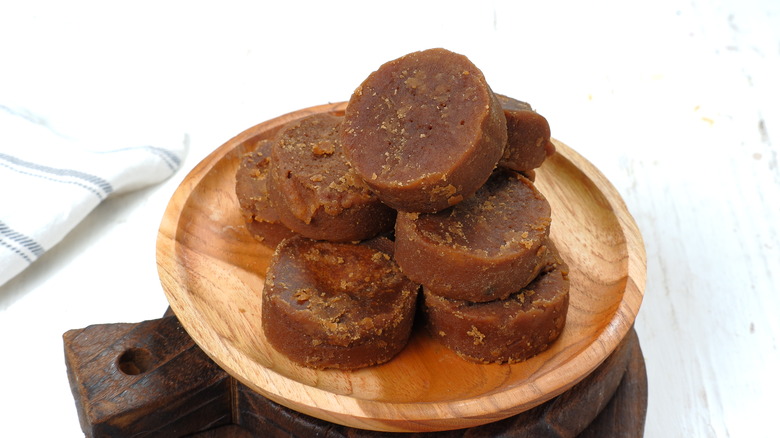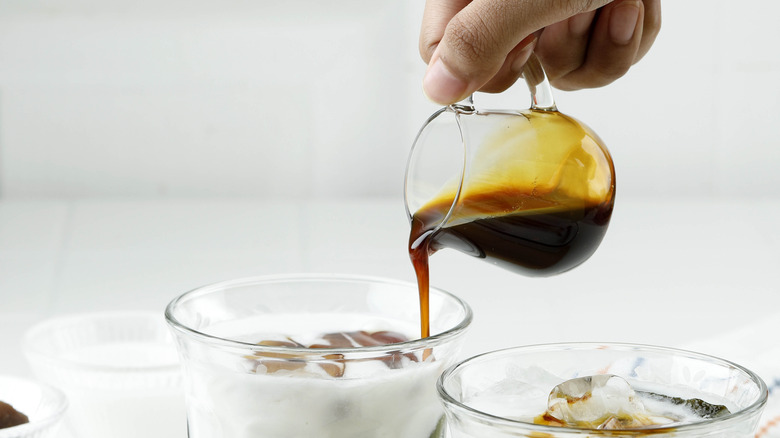Palm Sugar Might Be Underrated But It Actually Sprinkles Magic On Desserts
Anyone who isn't familiar with the inner workings of palm trees might be surprised to learn that tree tapping in the tropics is a time-honored industry. Not unlike maple trees, palm trees produce sap, which has been used to make palm sugar for thousands of years. Taste test this traditional sweetener and you'll quickly realize why it's a staple ingredient in Southeast Asian cooking.
Not to be confused with coconut palm sugar, which is made using the nectar of coconut flowers, palm sugar is a dynamic ingredient whose flavor varies depending on the species of palm tree it's sourced from and where it is processed. After the sap is collected from palm trees, it's cooked down to a syrup, cooled, and molded into small cakes in containers like bamboo stalks (used in Malaysia) and coconut husks (the Philippines). Commercially packaged varieties are sold in the form of discs, small cubes, or paste.
Chef Pailin Chongchitnant of Hot Thai Kitchen says that Thai palm sugar, which is typically made from the sap of the sugar palm tree, has a taste reminiscent of butterscotch. Others compare its flavor to caramel. Its fudgy melt-in-your-mouth quality makes it a tasty treat on its own. Malaysian palm sugar, on the other hand, has a crumbly texture and subtle smoky flavor with rich undertones that are reminiscent of molasses. Also called gula melaka, it's one of the darker varieties of palm sugar and is sourced from coconut palm trees.
Putting palm sugar to use
Palm sugar isn't as sweet as granulated white sugar and is found in savory dishes and desserts alike, from pad thai to bamboo sticky rice. Use palm sugar for more authentic-tasting Southeast Asian dishes and desserts, or use it as a substitute for refined sugar in other recipes. Be thoughtful about the flavors you're pairing with palm sugar, though: Because of its rich consistency and flavor, it shouldn't be used indiscriminately. Caramelly Thai palm sugar is delicious when sprinkled over chai tea or whisked into salad dressing. The rich, molasses flavor of Malaysian palm sugar, on the other hand, makes it a great sugar substitute in denser baked goods like butter cakes. Palm sugar of all varieties can be melted down into a syrup and added to drinks or poured over ice cream, pancakes, or fruit.
Look for palm sugar at specialty food stores or at your local Asian market. Be careful not to confuse it with coconut palm sugar, which is common in granulated forms at big box stores like Walmart. And if palm products raise alarm bells for you, don't fret: Although palm oil plantations cause devastating deforestation in countries like Indonesia and Malaysia, there's good news where palm sugar is concerned. Sugar-producing palm trees thrive in areas with high plant diversity and don't require the damaging plantation-style growth that makes palm oil so harmful. If done sustainably, palm sugar production could be a healthy alternative to palm oil production for Southeast Asian rainforests.

